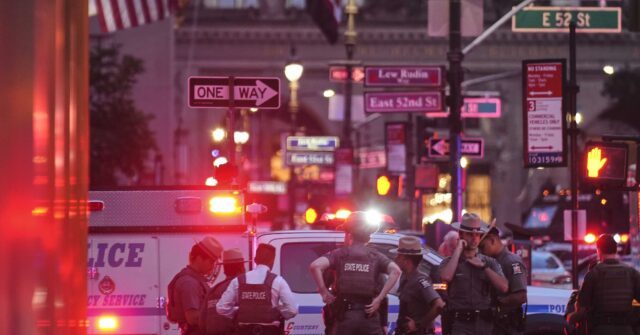People inside the office building in Manhattan had little or no warning. They also did not receive directions and had no way of knowing if they should shelter in place or evacuate.
First responders arrived quickly and heroically, but faced a similar obstacle—where were the victims? Where was the attacker? Was the attacker still a threat? It takes time to clear a building with 50 stories, and that delays the ability to render emergency medical care.
Technology is available now that allows people to alert first responders immediately and easily, with the press of just one button. Along with the alert, responders can receive detailed information about the exact location of the incident, where victims are located, and even monitor active threats in real-time through streaming video.
In a crisis, automated alerts via screens, PA systems, and wearable or wall-mounted panic buttons turn confusion into clarity. From hospitals to malls, commercial buildings to hotels, this communication technology must become the standard — not a luxury.
Mass shootings have occurred in office buildings, schools, malls, supermarkets, movie theaters, and places of worship — places where people gather to work, shop, relax, or pray. The attack in a Lafayette, Louisiana movie theater; the 2007 Trolley Square shooting in Salt Lake City; and the tragic massacre at the Aurora, Colorado cinema all reflect the same chilling reality: these locations were soft targets.
Whether at Walmart, in an office high-rise, or inside a mall, the pattern is clear. These spaces often lack comprehensive security plans and instead rely on basic or outdated alarms and generic alert systems. They are not equipped to deliver precise, rapid information during an emergency. Patrons in these situations did not receive potentially life-saving warnings or directions.
What the NYC office building and these vulnerable settings have in common is their absence of modern, adaptive security infrastructure. These venues and buildings rarely have a way to instantly notify building occupants with actionable information, or a system for first responders to give or get live updates. Without customizable platforms capable of mapping threats, locating victims, and guiding evacuations, confusion reigns — and precious minutes are lost. Leveraging real-time technology is no longer just a recommendation—it’s essential to saving lives.
Unfortunately, I am no stranger to violence. My daughter Meadow was tragically killed in the Parkland, Florida, school shooting in 2018. Violence is too common in our society and happening all around us. It is in our schools, office buildings, stores, malls, and communities. We need to do all that we can to reduce threats but we also must be prepared when they happen.
We can’t stop every threat, but we can strip away the confusion that allows violence to escalate and delays rescue. First responders need access to life-saving technology to act faster and more precisely. And the public — whether workers, students, customers, or hotel guests — needs easy ways to receive emergency information and call for help.
Let’s stop treating safety as an afterthought. Let’s prioritize life.
Andrew Pollack is a school and community safety advocate and the author of Why Meadow Died: The People and Policies That Created The Parkland Shooter and Endanger America’s Students.
Breitbart News
Read the full article .


